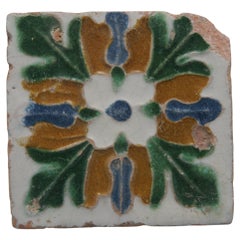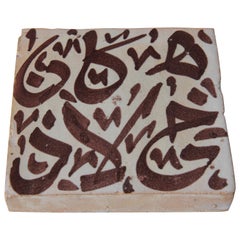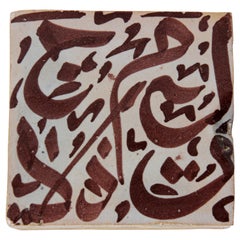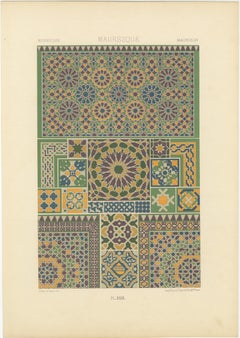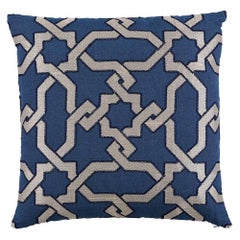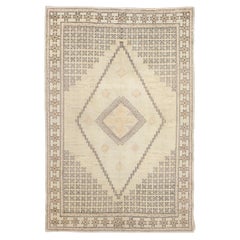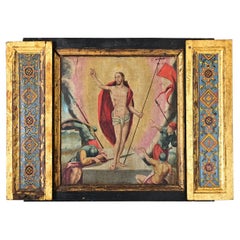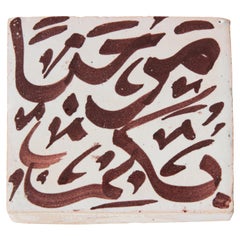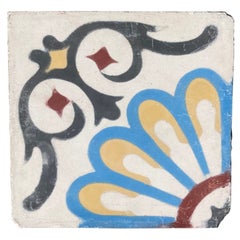Moorish Tile
Antique 16th Century Spanish Renaissance Ceramics
Earthenware
20th Century Moroccan Moorish Ceramics
Ceramic
20th Century Moroccan Moorish Ceramics
Ceramic
Antique Late 19th Century French Prints
Paper
21st Century and Contemporary North American Mid-Century Modern Pillows ...
Linen, Polyester
Mid-20th Century Moroccan Moorish Moroccan and North African Rugs
Wool
Antique 18th Century Portuguese Other Religious Items
Gold
20th Century Moroccan Moorish Ceramics
Ceramic
Late 20th Century Moroccan Moorish Architectural Elements
Cement
20th Century Moroccan Moorish Flooring
Cement
Vintage 1960s Moroccan Moorish End Tables
Wood
Late 20th Century Moroccan Moorish Architectural Elements
Concrete
20th Century Moroccan Moorish Patio and Garden Furniture
Concrete
20th Century French Dining Room Sets
Antique 16th Century Spanish Renaissance Ceramics
Earthenware
Antique 16th Century Spanish Renaissance Ceramics
Earthenware, Clay, Maiolica
Antique 16th Century Spanish Renaissance Ceramics
Earthenware
Late 20th Century American Moorish Dining Room Tables
Wrought Iron
20th Century Moroccan Moorish Side Tables
Ceramic
20th Century Moroccan Moorish Tables
Wrought Iron
Late 20th Century Moroccan Moorish Side Tables
Terracotta
Vintage 1920s Turkish Moorish Ceramics
Ceramic
20th Century Moroccan Moorish Flooring
Cement
20th Century Moroccan Moorish Ceramics
Ceramic
20th Century Moroccan Moorish Ceramics
Ceramic
20th Century Moroccan Moorish Patio and Garden Furniture
Ceramic
Late 20th Century Moroccan Moorish Architectural Elements
Cement
20th Century Moroccan Moorish Flooring
Cement
Early 20th Century Moroccan Moorish Side Tables
Porcelain, Hardwood
20th Century Moroccan Moorish Flooring
Cement
20th Century Moroccan Moorish Patio and Garden Furniture
Iron
Late 20th Century Moroccan Moorish Flooring
Cement
Late 20th Century Moroccan Moorish Architectural Elements
Cement
Antique Late 19th Century Asian Islamic Ceramics
Ceramic
20th Century Moroccan Moorish Patio and Garden Furniture
Cement, Iron
Antique Late 19th Century Turkish Islamic Ceramics
Ceramic
Late 20th Century Turkish Ceramics
Ceramic
Late 20th Century Turkish Islamic Ceramics
Ceramic
20th Century Mid-Century Modern Wall-mounted Sculptures
Resin
21st Century and Contemporary Indian Aesthetic Movement Indian Rugs
Cowhide, Leather
Early 20th Century American Flooring
2010s Moroccan Moorish Fountains
Vintage 1950s Italian Decorative Objects
Brass
Mid-20th Century Moroccan Moorish Ceramics
Ceramic
Antique 19th Century English Side Tables
20th Century Moroccan Moorish Flooring
Cement
Late 20th Century Moroccan Moorish Dining Room Tables
Wrought Iron
Late 20th Century Moroccan Moorish Architectural Elements
Cement
1990s Moroccan Moorish Flooring
Cement
Mid-20th Century Turkish Moorish Ceramics
Ceramic
Mid-20th Century Moroccan Moorish Ceramics
Ceramic
20th Century Moroccan Moorish Flooring
Cement
1990s Moroccan Moorish Flooring
Cement
20th Century Moroccan Moorish Side Tables
Ceramic
20th Century Moroccan Moorish Flooring
Cement
20th Century Moroccan Moorish Patio and Garden Furniture
Concrete
1990s Moroccan Moorish Flooring
Cement
- 1
Moorish Tile For Sale on 1stDibs
How Much is a Moorish Tile?
A Close Look at Moorish Furniture
After the Muslim conquest of the Iberian Peninsula in the eighth century, Islamic Spain became a cultural mix of influences that shaped both private homes and religious spaces. Moorish design was the name given to this style, which evolved through the 15th century with vibrant tile work, horseshoe arches and lavish ornamentation, most visible at sites such as Granada’s Alhambra and the Mosque-Cathedral of Córdoba. Moorish furniture was often similarly ornate, and featured pieces inlaid with wood, ivory and bone.
When European designers began studying Moorish art and architecture in the early 19th century, it led to a Moorish Revival. Appropriating the style’s decorative flourishes and architectural elements, it promoted a romantic view of Islamic design. Travelers could bring home a memento of what they witnessed in the Middle East, a trend that aligned with a fad for themed interiors. Men’s smoking rooms arranged with ottomans, divans and settees and inlaid tables were especially popular, as were cafés where coffee was served amid bead curtains and colorful floor mats. (Handwoven rugs are a centerpiece of Moorish interiors.) Octagonal rooms with domed ceilings were created for wealthy homes, frequently with furnishings like pipe stands, filigree plasterwork and arched doorways. The horseshoe arch is an iconic attribute of Moorish architecture that, in addition to Spain, can be found in Sicily, Morocco and elsewhere.
Several late 19th to early 20th-century movements featured Moorish touches. The American and English Aesthetic Movement, for example, borrowed liberally from global decorating styles, as seen in furniture designed by Lockwood de Forest, a New York-born artist who mixed Eastern and Western forms. The visual vocabulary of Art Nouveau also references the elegant use of geometry in Moorish design, with Milanese Art Nouveau furniture designer Carlo Bugatti drawing inspiration from the style. The Arts and Crafts movement, which prized expressive yet simple design, incorporated Moorish influences; hand-painted furniture and tile work created by William De Morgan, a British designer and potter who made furnishings for the likes of Morris & Co., were informed by techniques from Moorish Spain.
Find a collection of Moorish lighting, decorative objects, folk art and more furniture on 1stDibs.
